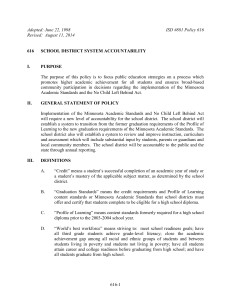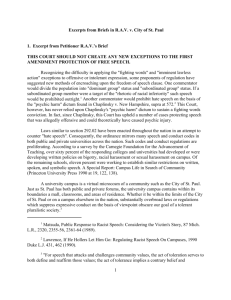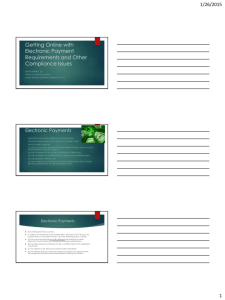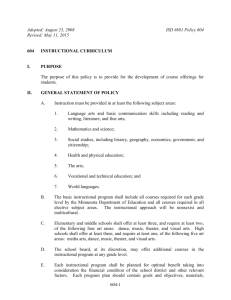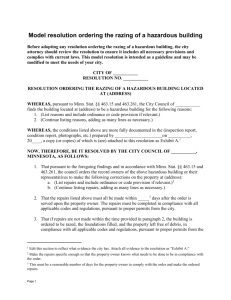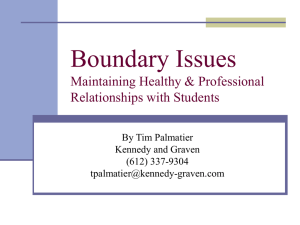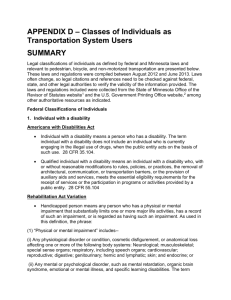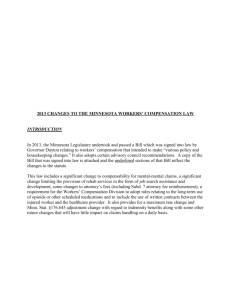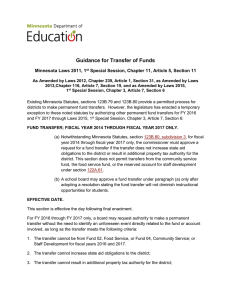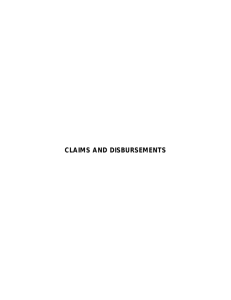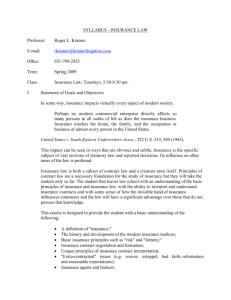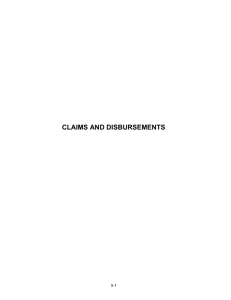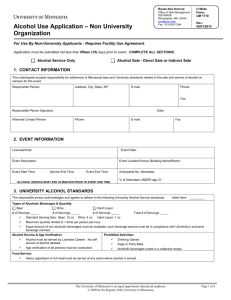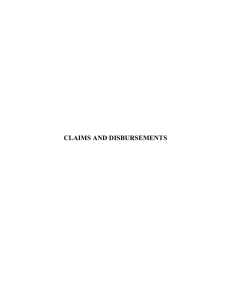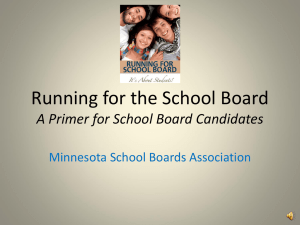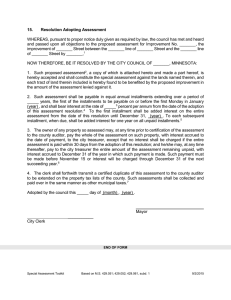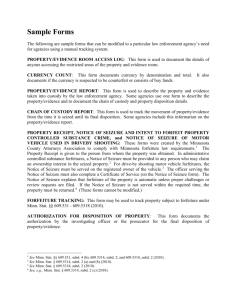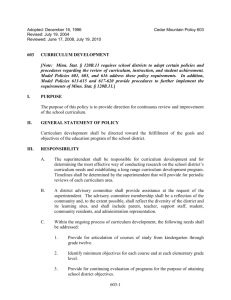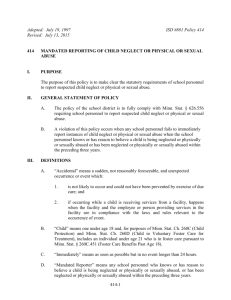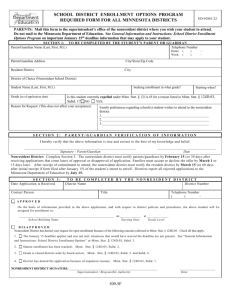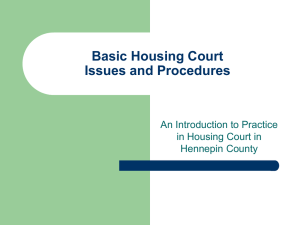Policy 601 School District Curriculum and Instruction Goals
advertisement
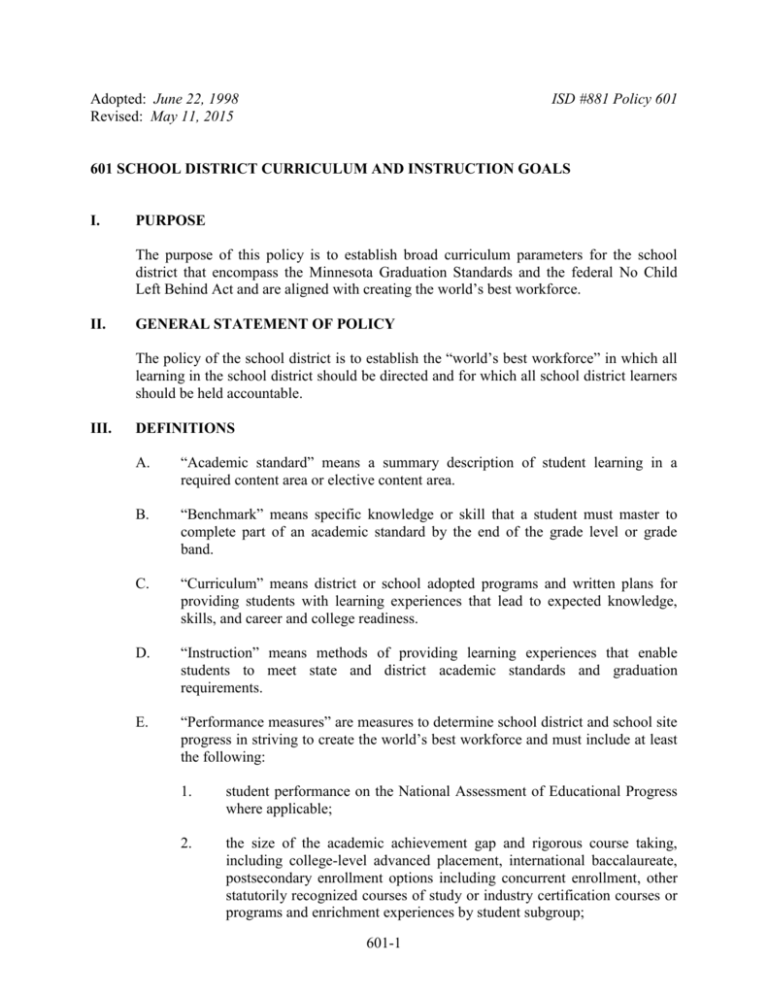
Adopted: June 22, 1998 Revised: May 11, 2015 ISD #881 Policy 601 601 SCHOOL DISTRICT CURRICULUM AND INSTRUCTION GOALS I. PURPOSE The purpose of this policy is to establish broad curriculum parameters for the school district that encompass the Minnesota Graduation Standards and the federal No Child Left Behind Act and are aligned with creating the world’s best workforce. II. GENERAL STATEMENT OF POLICY The policy of the school district is to establish the “world’s best workforce” in which all learning in the school district should be directed and for which all school district learners should be held accountable. III. DEFINITIONS A. “Academic standard” means a summary description of student learning in a required content area or elective content area. B. “Benchmark” means specific knowledge or skill that a student must master to complete part of an academic standard by the end of the grade level or grade band. C. “Curriculum” means district or school adopted programs and written plans for providing students with learning experiences that lead to expected knowledge, skills, and career and college readiness. D. “Instruction” means methods of providing learning experiences that enable students to meet state and district academic standards and graduation requirements. E. “Performance measures” are measures to determine school district and school site progress in striving to create the world’s best workforce and must include at least the following: 1. student performance on the National Assessment of Educational Progress where applicable; 2. the size of the academic achievement gap and rigorous course taking, including college-level advanced placement, international baccalaureate, postsecondary enrollment options including concurrent enrollment, other statutorily recognized courses of study or industry certification courses or programs and enrichment experiences by student subgroup; 601-1 IV. 3. student performance on the Minnesota Comprehensive Assessments; 4. high school graduation rates; and 5. career and college readiness under Minn. Stat. § 120B.30, Subd. 1. F. “World’s best workforce” means striving to: meet school readiness goals; have all third grade students achieve grade-level literacy; close the academic achievement gap among all racial and ethnic groups of students and between students living in poverty and students not living in poverty; have all students attain career and college readiness before graduating from high school; and have all students graduate from high school. G. “Experiential learning” means learning for students that includes career exploration through a specific class or course or through work-based experiences such as job shadowing, mentoring, entrepreneurship, service learning, volunteering, internships, other cooperative work experience, youth apprenticeship, or employment. LONG-TERM STRATEGIC PLAN A. The school board, at a public meeting, shall adopt a comprehensive, long-term strategic plan to support and improve teaching and learning that is aligned with creating the world’s best workforce and includes the following: 1. clearly defined school district and school site goals and benchmarks for instruction and student achievement for all nine student categories identified under the federal 2001 No Child Left Behind Act and two student gender categories of male and female; 2. a process for assessing and evaluating each student’s progress toward meeting state and local academic standards and identifying the strengths and weaknesses of instruction in pursuit of student and school success and curriculum affecting students’ progress and growth toward career and college readiness and leading to the world’s best workforce; 3. a system to periodically review and evaluate the effectiveness of all instruction and curriculum, taking into account strategies and best practices, student outcomes, principal evaluations under Minn. Stat. § 123B.147, Subd. 3, and teacher evaluations under Minn. Stat. § 122A.40, Subd. 8, or 122A.41, Subd. 5; 4. strategies for improving instruction, curriculum, and student achievement, including the English and, where practicable, the native language development and the academic achievement of English learners; 601-2 B. 5. education effectiveness practices that integrate high-quality instruction, rigorous curriculum, technology, and a collaborative professional culture that develops and supports teacher quality, performance, and effectiveness; and; 6. an annual budget for continuing to implement the school district plan. School board goals will be approved at a school board meeting each year and school site goals shall be set and included in the Q Comp plan each year. 1. 2. All students will be required to demonstrate essential skills to effectively participate in lifelong learning. These skills include the following: a. reading, writing, speaking, listening, and viewing in the English language; b. mathematical and scientific concepts; c. locating, organizing, communicating, and evaluating information and developing methods of inquiry (i.e., problem solving); d. creative and critical thinking, decision making, and study skills; e. work readiness skills; f. global and cultural understanding. Each student will have the opportunity and will be expected to develop and apply essential knowledge that enables that student to: a. live as a responsible, productive citizen and consumer within local, state, national, and global political, social, and economic systems; b. bring many perspectives, including historical, to contemporary issues; c. develop an appreciation and respect for democratic institutions; d. communicate and relate effectively in languages and with cultures other than the student’s own; e. practice stewardship of the land, natural resources, and environment; f. use a variety of tools and technology to gather and use information, enhance learning, solve problems, and increase human productivity. 601-3 3. Students will have the opportunity to develop creativity and selfexpression through visual and verbal images, music, literature, world languages, movement, and the performing arts. 4. School practices and instruction will be directed toward developing within each student a positive self-image and a sense of personal responsibility for: 5. Legal References: a. establishing and achieving personal and career goals; b. adapting to change; c. leading a healthy and fulfilling life, both physically and mentally; d. living a life that will contribute to the well-being of society; e. becoming a self-directed learner; f. exercising ethical behavior. Students will be given the opportunity to acquire human relations skills necessary to: a. appreciate, understand, interdependence; and accept human diversity and b. address human problems through team effort; c. resolve conflicts with and among others; d. function constructively within a family unit; e. promote a multicultural, gender-fair, disability-sensitive society. Minn. Stat. § 120B.018 (Definitions) Minn. Stat. § 120B.02 (Educational Expectations for Minnesota Students) Minn. Stat. § 120B.11 (School District Process) Minn. Stat. § 120B.30, Subd. 1 (Statewide Testing and Reporting System) Minn. Stat. § 120B.35, Subd. 3 (Student Academic Achievement and Growth) Minn. Stat. § 122A.40, Subd. 8 (Employment; Contracts; Termination) Minn. Stat. § 122A.41, Subd. 5 (Teacher Tenure Act; Cities of the First Class; Definitions) Minn. Stat. § 123B.147, Subd. 3 (Principals) 20 U.S.C. § 5801, et seq. (National Education Goals 2000) 20 U.S.C. § 6301, et seq. (No Child Left Behind Act) 601-4 Cross References: ISD #881 Policy 104 (School District Mission Statement) ISD #881 Policy 613 (Graduation Requirements) ISD #881 Policy 614 (School District Testing Plan and Procedure) ISD #881 Policy 615 (Testing, Accommodations, Modifications, and Exemptions for IEPs, Section 504 Plans, and LEP Students) ISD #881 Policy 616 (School District System Accountability) 601-5
